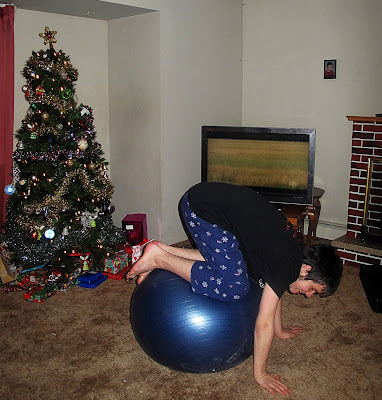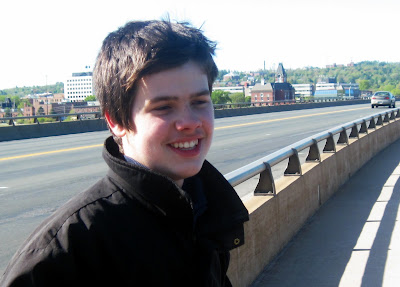The word mitochondria is not new to discussions of autism disorders. The Poling case "injected", no pun intended, mitochondria into the debates over vaccines and autism. The recent UC Davis study, by Cecilia Giulivi, Ph D., and other researchers,
Mitochondrial Dysfunction in Autism, published in the December 1, 2010 issue of the Journal of the American Medical Association has brought the association between mitochondrial dysfunction and autism disorders into mainstream public consciousness and into mainstream medical legitimacy. Make no mistake about it we will now hear much, much more about the connection between autism disorders and mitochondrial dysfunction.
The Poling family was successful in advancing a vaccine injury claim on behalf of their daughter Hannah Poling to the point of settlement by US authorities. Hannah's father is Dr. Jon Poling, a practicing neurologist in Athens, Georgia, and clinical assistant professor at the Medical College of Georgia. He reviewed his daughter's case in the
Atlanta Journal-Constitution on April 11, 2008. In his comments Dr. Poling explained how mitchondrial dysfunction was related to his daughter's case and to the existence of a possible mitochondrial dysfunction subgroup of autism disorder. He also discussed, as a medical doctor who expressly recognized the importance of vaccines in preventing serious diseases, the need for public health authorities to abandon fear tactics and conduct research to restore confidence in public health authorities and vaccines:
"Mitochondria key
To understand Hannah's case, it is important to understand mitochondria, which act like batteries in our cells to produce energy critical for normal function. Because the government's concession hinged on the presence of Hannah's underlying medical condition, mitochondrial dysfunction, some claim the decision is relevant to very few other children with autism. As a neurologist, scientist and father, I disagree.
Emerging evidence suggests that mitochondrial dysfunction may not be rare at all among children with autism. In the only population-based study of its kind, Portuguese researchers confirmed that at least 7.2 percent, and perhaps as many as 20 percent, of autistic children exhibit mitochondrial dysfunction. While we do not yet know a precise U.S. rate, 7.2 percent to 20 percent of children does not qualify as "rare." In fact, mitochondrial dysfunction may be the most common medical condition associated with autism.
Biological markers
Although unlikely, if the Portuguese studies are incorrect and mitochondrial dysfunction were found to be a rarity occurring in less than 1 percent of all autism, it would still impact up to 10,000 children (250,000 worldwide), based on current estimates that 1 million people in the U.S. (25 million worldwide) have autism. If, on the other hand, the research showing that 7.2 percent to 20 percent of children with autism have mitochondrial dysfunction is correct, then the implications are both staggering and urgent.
Autism researchers do not currently understand whether mitochondrial dysfunction causes autism or is simply a secondary biological marker. Autism clearly has many different causes, and should really be separated into multiple autism(s). I propose that we clearly identify and research the subpopulation term of "mitochondrial autism," which is distinguished by its unique biological, but not genetic, markers.
Based on what we know now, it is time to follow the prestigious Institute of Medicine 2004 report regarding autism and vaccines:
"Determining a specific cause (for autism) in the individual is impossible unless the etiology is known and there is a biological marker. Determining causality with population-based methods requires either a well-defined at-risk population or a large effect in the general population."
A paradigm shift
When the IOM report was published, mitochondrial dysfunction defining an autistic subpopulation was not firmly established. Today there is no doubt that mitochondrial dysfunction represents a distinct autism subpopulation biological marker. I urge health officials and the IOM to embrace their own report and pursue this breakthrough in the science of autism. National public health leaders, including those at CDC, must now recognize the paradigm shift caused by this biological marker with regard to their current position of dispelling a vaccine-autism link.
In light of the Hannah Poling concession, science must determine more precisely how large the mitochondrial autism subpopulation is: 1 percent, 7.2 percent, 20 percent?
Based on the 2004 IOM analysis, if the mitochondrial autism subpopulation is found to be relatively uncommon, then all conclusions from prior epidemiological studies refuting an autism-vaccination link must be discarded. New studies then need to be performed exclusively with the mitochondrial subpopulation. If mitochondrial autism turns out to be common, then we could re-analyze the data from prior studies to determine if these studies were powered sufficiently based on a predicted effect size. If not powered appropriately, the conclusion refuting an autism-vaccine link would again have to be rejected. These statistical concepts are basic.
The current vaccine schedule, co-sponsored by the CDC and the American Academy of Pediatrics, injures a small but significant minority of children, my daughter unfortunately being one of those victims. Every day, more parents and some pediatricians reject the current vaccine schedule. In an abundance of caution, meaningful reform must be performed urgently to prevent the re-emergence of serious diseases like polio or measles.
Need for research
As a neurologist, I have cared for those afflicted with SSPE (a rare but dreaded neurological complication of measles), paralytic polio and tetanus. If these serious vaccine-preventable diseases again become commonplace, the fault will rest solely on the shoulders of public health leaders and policymakers who have failed to heed the writing on the wall (scribbled by my 9-year old daughter).
The mitochondrial autism scenario that my daughter has so eloquently painted has the CDC and public health experts logically cornered. Denial and fear tactics won't close Pandora's Box. Whether we find that mitochondrial autism is rare or common, there is urgent research left to be done to fully understand the interrelationship of vaccines, autism and mitochondria.
Reform of the vaccine schedule will be an important part of the solution, whether vaccines play a major or minor role in autism. Our public health agencies and programs need a reconstruction plan. Day one of the reconstruction hopefully starts at the Vaccine Safety Advisory Committee's Working Group, to be held at HHS headquarters today in Washington."
Dr. Jon Poling, as a neurologist, is not an easy target for an anti-parent smear campaign. His call for the need to understand mitochondrial dysfunction as a subset of autism could not simply be ignored. Now with the JAMA published study by the UC Davis researchers mitochondrial dysfunction and its connection to some autism disorders will most certainly be debated and researched more intensively. Those who foolishly believe that public confidence in vaccines, and other possible sources of mitochondrial disruptive products like pesticides, will be restored by simply attacking and marginalizing those who ask questions will soon have to wake up and face reality.
The smear tactics have not worked, they will not work. That will not stop them from happening though. Instead of attacking credible figures like Dr. Jon Poling or the UC Davis researchers who conducted the JAMA published story the Economist, after emphasizing the study limitations properly reported by the study authors themselves, and trotting out the usual "correlation does not imply causation" caution, responded with a favorite noted by Shakespeare centuries ago in Henry VI, part 2, - "the first thing we do, kill all the lawyers".
The Economist, recognizing the threat to commercial interests posed by mitochondrial dysfunction research in connection with autism, does not actually advocate killing all the lawyers, it simply wants to discredit them and the cause of autistic children and their families they might come to represent:
"The genetic condition in this particular case is rare: only four other examples are known. And no scientist—least of all Dr Giulivi—is suggesting that the new study bears on the question of environmental triggers of mitochondrial malfunction. But if faulty mitochondria do turn out to be a cause of autism, even if not in all cases, that question will have to be investigated. And you can bet your bottom dollar that somewhere out there is a lawyer wondering whether he can do just that."
With such attacks the Economist glosses over its assertion that mitochondrial disorder is rare. It also glosses over the possible role of environmental factors in damaging mitochondria. Dr. Poling addressed these arguments with actual figures and analysis unlike the Economist which simply made the claim and quickly went after a straw man. Jenny McCarthy may not be in this fight, Dr. Wakefield is involved as an author of the study, and the study is JAMA published. A new straw man is needed to deflect energy and attention from facts and analysis and lawyers are a tried and true target .... at least when they represent the little guy.
The Economist though is firing a bullet with no bite. The fear tactics and smears, even the almost 100% dedication of funding for genetic based autism research, have not worked. The silly attack on lawyers betrays the fear in the Economist's response.... the fear of the potential threat to commercial interests arising from mitochondrial dysfunction research findings, a fear that may well have prompted the Offit Offensive which was launched aggressively in late 2008 and early 2009 after the Poling settlement, and mitochondrial dsyfunction, had become public. Look for the UC Davis, JAMA published study, to provoke more hostile responses and diversions ... as well as more research.
The JAMA study is a benchmark though. Those who pretend that all is known about autism disorders and their causes, that autism is 100% genetic, that no further research is needed on important potential causes of the various autism disorders, are failing, their armies are struggling. They are losing the battle to freeze our knowledge of autism.
With the UC Davis, JAMA published study, we know more about autism disorders, and we will be more inclined to do more actual research, and learn much more about the causes of autism disorders, whether they do, or whether they do not, implicate vaccines, vaccine ingredients or the many toxins produced in the products we consume and wear in our homes, workplaces and schools.
"Mitochondrial dysfunctions", in my humble opinion, are the autism words of the year in 2010.









































